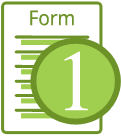March 10, 2011 (Chris Moore)

The total negative equity of homeowners who have mortgages on their homes now stands at a whopping $751 billion according to CoreLogic’s latest release of its Negative Equity Report. The report predicts that housing prices are expected to fall another 5 to 10 percent adding as much $75 billion to the amount of negative equity already faced by American borrowers holding millions captive in their homes, unable to move or sell their properties.
The report discloses that 11.1 million residential properties, or 23.1 percent of all U.S. homes, were in negative equity at Dec. 31, up from 10.8 million, or 22.5 percent, the prior quarter. The total negative equity held by the nation’s homeowners rose $7 billion for the fourth quarter from $744 billion at the end of the third quarter in 2010, but down from $800 billion a year earlier. The number of upside down mortgages declined through the first three quarters of 2010, as more properties were foreclosed upon.
“Negative equity holds millions of borrower’s captive in their homes, unable to move or sell their properties. Until the high level of negative equity begins to recede, the housing and mortgage finance markets will remain very sluggish,” said Mark Fleming, chief economist with CoreLogic.
Another 2.4 million borrowers had less than five percent home equity, putting the amount of negative equity and near-negative equity homeowners at 27.9 percent of all residential properties with a mortgage.
Nevada reportedly had the highest negative equity percentage with 65 percent of all of its mortgaged properties underwater, followed by Arizona (51 percent), Florida (47 percent), Michigan (36 percent) and California (32 percent). Nevada also had the highest average loan-to-value ratio at 118 percent. Conversely, New York homeowners have an average LTV ratio of 50 percent.
Oklahoma had the smallest percentage of underwater homeowners in the October-December quarter, at 5.8 percent. Only nine states recorded percentages less than 10 percent.
CoreLogic also weighed in on the Dodd-Frank Wall Street Reform and Consumer Protection Act of 2010’s “qualified residential mortgage” (QRM) requirement by saying the possible 20% down payment that may be required under the forthcoming definition of a QRM should make loans cheaper to originate, however, the amount of current negative equity will impact the ability of current homeowners to provide sufficient down payments.
“Clearly, higher down payments are necessary to reduce credit risk for lenders and securitizers,” the company said. “But given the majority of homebuyers are repeat buyers who use current equity as the bulk of their equity, states that have a lower proportion of borrowers with 80% LTV or less will be adversely affected because repeat buyers will not have sufficient down payments to buy new homes with QRMs.”
Tags: CoreLogic, Negative Equity Report, underwater mortgages, housing prices, housing market, mortgage market, home equity Dodd-Frank, QRM




